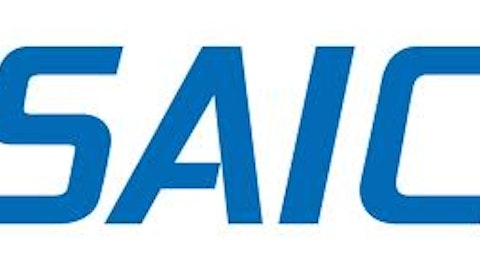The StressTest column appears every Thursday on Fool.com. Check back weekly and follow @TMFStressTest.

The “why” behind such a move isn’t complicated. Yesterday, my fellow Fool John Maxfield shared the following:
According to Moebs Services, a consulting firm that specializes in the banking industry, the average checking account costs the nation’s biggest banks between $350 and $450 per year. Meanwhile, the average revenue per account comes in at an estimated $268 per year.
That’s painful if you’re a bank losing money on those checking accounts. There are a few things they can do to turn that frown upside down, though, and clearly one of them is no longer offering money-losing accounts for free.
But reports on the death of free checking are premature. Consider if you fit into any of the following three categories:
1). You have an average monthly balance of $1,500 or more.
2). You have balances across multiple products from your bank (IRA, savings, money market, CDs, etc.).
3). You have a monthly direct deposit of $500.
The fact that you’re reading this article right now makes me pretty confident that one of the above — if not multiple — are true for you. To be sure, “truly” free checking is still available. Huntington Bancshares Incorporated (NASDAQ:HBAN), for instance, has an “Asterisk-Free Checking” that’s free of monthly fees and “most importantly, free from asterisks.” But customers can also bump up to Huntington’s “Plus Checking” by maintaining a balance of $15,000 across Huntington products (checking, savings, money market, and so on).
Turning back to PNC Financial Services (NYSE:PNC) and some of the other big boys, though, that $1,500 average monthly balance will still score you a PNC Financial Services (NYSE:PNC) “Performance” account with no monthly fee. Similarly, you can avoid monthly fees on Bank of America Corp (NYSE:BAC)‘s “MyAccess Checking” and Wells Fargo & Co (NYSE:WFC)‘s “Value Checking” with that average monthly balance. A monthly direct deposit of $500 will also nix the Wells Fargo & Co (NYSE:WFC) fee, while it only takes a $250 monthly direct deposit at Bank of America Corp (NYSE:BAC) to knock off the fee there. And Bank of America Corp (NYSE:BAC) also offers more advanced monthly fee-free checking for customers who have certain outstanding loans.
The point, from a consumer’s perspective at least, is that there are a variety of relatively painless ways to avoid checking-account fees even if you don’t want to switch to a local bank or credit union — which, of course, is also an option.
What investors want
If this all seems like a lot of hoops for customers to jump through to get their free checking, remember that it all loops back to the quote I grabbed from Maxfield above. There are a lot of checking accounts that just aren’t profitable for banks. This presents a challenge because:
1). Unprofitable customers aren’t good for a business (duh).
2). Attracting prospects that may be great long-term customers may require using a loss-leader product.
3). It’s not always obvious at day one which prospects will be those long-term pluses.
For the biggest banks, we could probably add another bullet point: There’s enough smoldering animosity that any attempt to charge additional fees is met with outcry.
One of the key ways banks can tilt this equation in their favor is to work on the cost side of it. Rather than introduce additional fees, banks can push customers toward less-costly avenues for their banking services — like mobile banking, for instance. As Jessica Alling noted earlier this week, Bank of America Corp (NYSE:BAC) is now seeing more than 100,000 checks processed per day through mobile deposit. And as this takes place, investors have also heard a lot about banks closing branches and pruning ATM networks.
That doesn’t preclude actions on the other side of the equation, though. However, from an investor’s perspective, it’s not quite as easy as cheering for a drastic move away from totally free checking. After all, it’s a brutally competitive environment when it comes to attracting deposits and bringing in new customers, and it’s likely that some banks will continue to be willing to offer free checking, take the hit on the front end, and lure as many customers as possible.
For a long time, free checking has been the accepted norm. But in a changed environment with lower interest rates, tighter-regulated fees, and more of a focus on efficiency and smart growth, it makes sense that the norm is being rethought. But this change will require a careful approach (remember the game Operation?). What investors should look for, then, are efforts by the banks to find a balance between cost cutting, hoop jumping, and free checking.
The article 3 Reasons You Won’t Have to Kiss Free Checking Goodbye originally appeared on Fool.com and is written by Matt Koppenheffer.
Matt Koppenheffer owns shares of Bank of America and PNC Financial Services (NYSE:PNC). The Motley Fool recommends Bank of America and Wells Fargo. The Motley Fool owns shares of Bank of America, Huntington Bancshares, PNC Financial Services, and Wells Fargo.
Copyright © 1995 – 2013 The Motley Fool, LLC. All rights reserved. The Motley Fool has a disclosure policy.




